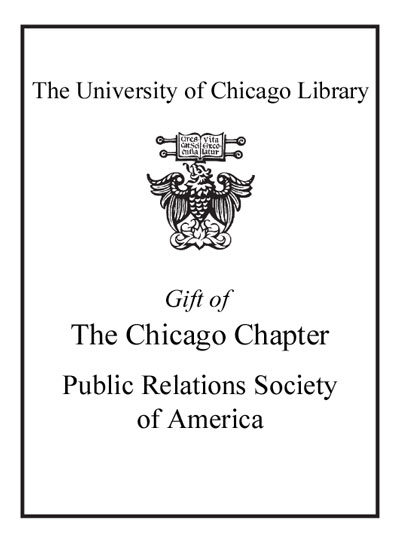Effective top management : beyond the failure of corporate governance and shareholder value /
Saved in:
| Author / Creator: | Malik, Fredmund F. |
|---|---|
| Imprint: | Weinheim : Wiley-VCH, c2006. |
| Description: | 287 p. : ill. ; 24 cm. |
| Language: | English |
| Subject: | |
| Format: | Print Book |
| URL for this record: | http://pi.lib.uchicago.edu/1001/cat/bib/6261056 |
Table of Contents:
- Introduction to the English Edition
- Preface to the English Edition
- Terminology Aspects
- New Introduction to the Third Edition
- 1. Fundamental Reorientation
- 2. What is Corporate Governance? The Consequences of Asking the Wrong Question
- 3. Misconceptions and Their Consequences
- 4. Corporate Governance in the Service of the Company
- 5. Illusions
- 6. Entertainment Rather than Information
- 7. Appearances are Deceptive
- Part 1.
- 1. Should Corporate Governance Manage?
- 2. Functional Shortcomings of the Systems of Today
- 2.1. Corporate Governance: Fact or Fiction?
- 2.2. Is the Criticism Justified?
- 2.3. Classic but Avoidable Management Errors
- 3. Is the Management of the Future up to the Task? The Great Transformation
- 3.1. False Prophecies in the Nineties
- 3.2. (Almost) Everything will Change
- 3.3. Management: The Most Important Social Function
- 4. Corporate Governance
- 4.1. The Importance of Effective Corporate Governance
- 4.2. The Nature and Function of Profit
- 4.3. The Three Models of Corporate Governance - And a Fourth
- 5. What is a Healthy Business? Variables for Assessing a Business
- 5.1. Market Position
- 5.2. Innovative Performance
- 5.3. Productivities
- 5.4. Attracting Good People
- 5.5. Liquidity and Cash Flow
- 5.6. Profitability
- 5.7. Precision of the Variables
- 5.8. Discussing the Right Matters
- 5.9. Biological Thinking in Management: A Red Herring?
- Part 2.
- 6. The Architecture of Top Management
- 7. The Structure of Corporate Governance
- 7.1. The Role of the Governing Body
- 7.2. The Size and Internal Organisation of the Governing Body
- 7.2.1. Size
- 7.2.2. Internal Organisation - Committee and Subcommittees
- 7.3. Personnel Composition
- 7.3.1. Technical Competence
- 7.3.2. Independence
- 7.3.3. Exclusion Criteria
- 7.3.4. Term of Office and Age Limit
- 7.3.5. Shareholders' Interests
- 7.4. Remuneration of the Governing Body
- 7.5. Managing the Governing Body
- 7.5.1. Number and Length of Meetings
- 7.5.2. Personal Attendance
- 7.5.3. Regularity
- 7.5.4. Followup and Followthrough
- 7.5.5. Drawing up the Agenda
- 7.5.6. Information Available to the Governing Body
- 7.6. Evaluation of the Governing Body
- 7.7. Internal Review - Management Audit
- 7.8. The Chairman of the Corporate Governance
- 8. Creating the Executive Body
- 8.1. The Tasks of the Executive Body
- 8.2. Effectiveness of the Executive Body
- 8.2.1. Preventing Ineffective Time Management
- 8.2.2. Keeping a Hold on Reality
- 8.3. Term of Office
- 8.4. The Executive Body as a Team
- 9. Management or Leadership
- 9.1. Mistakes and Misconceptions
- 9.2. The Mystique of Leadership
- 9.3. From Manager to Leader
- 9.4. Charisma
- 10. Power, Responsibility, and Liability
- 11. Personnel Selection and Appointment to Top Positions
- 11.1. Principles
- 11.2. Methodology of Personnel Selection
- 11.3. Deciding on the Successor Right at the Top
- 11.4. Personnel Decisions below Executive Level
- 11.5. Internal or External Recruitment?
- Postscript
- Appendices
- Appendix 1. Appearance and Reality
- Appendix 2. Reorientation: The Nonsense about the New Economy
- Appendix 3. The Economic Situation in 2004: Part 1
- Appendix 4. The Economic Situation in 2004: Part 2
- Bibliography
- Index

